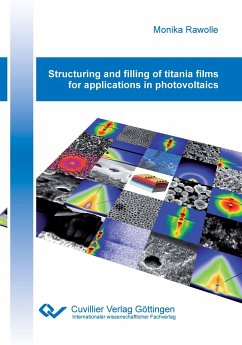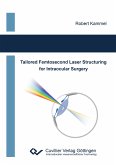In the presented thesis, the possibilities to synthesize titania nanostructures and the possibilities to fill the resulting nanostructures by other materials are investigated for photovoltaic applications. The solar cells based on titania are distinguished either as hybrid or as dye-sensitized solar cells. The main focus of the investigations lies on the correlation of the morphology and the functionality of the obtained thin films. The different investigated systems and related questions comprise the structuring of titania on the one hand, and the filling of the structures on the other hand. Sol-gel chemistry in combination with block copolymers as structure templates is applied to obtain titania thin films with a sponge-like morphology, which shows a high porosity and both mesopores and macropores. The structures are investigated in thin films, but also in a nanostructured drop of titania. Improvement of the structures by the combination of micro-fluidics with the templated sol-gel is also discussed. Furthermore, a low temperature synthesis route is examined to obtain crystalline titania. The stability of the resulting titania films is checked for water vapor infiltration with the resulting capillary forces. In order to obtain working solar cells, the titania nanostructures need to be filled by hole-conducting materials. The degree of filling of the structures with hole-conducting organic materials is related to the functionality of the solar cells.
Hinweis: Dieser Artikel kann nur an eine deutsche Lieferadresse ausgeliefert werden.
Hinweis: Dieser Artikel kann nur an eine deutsche Lieferadresse ausgeliefert werden.








